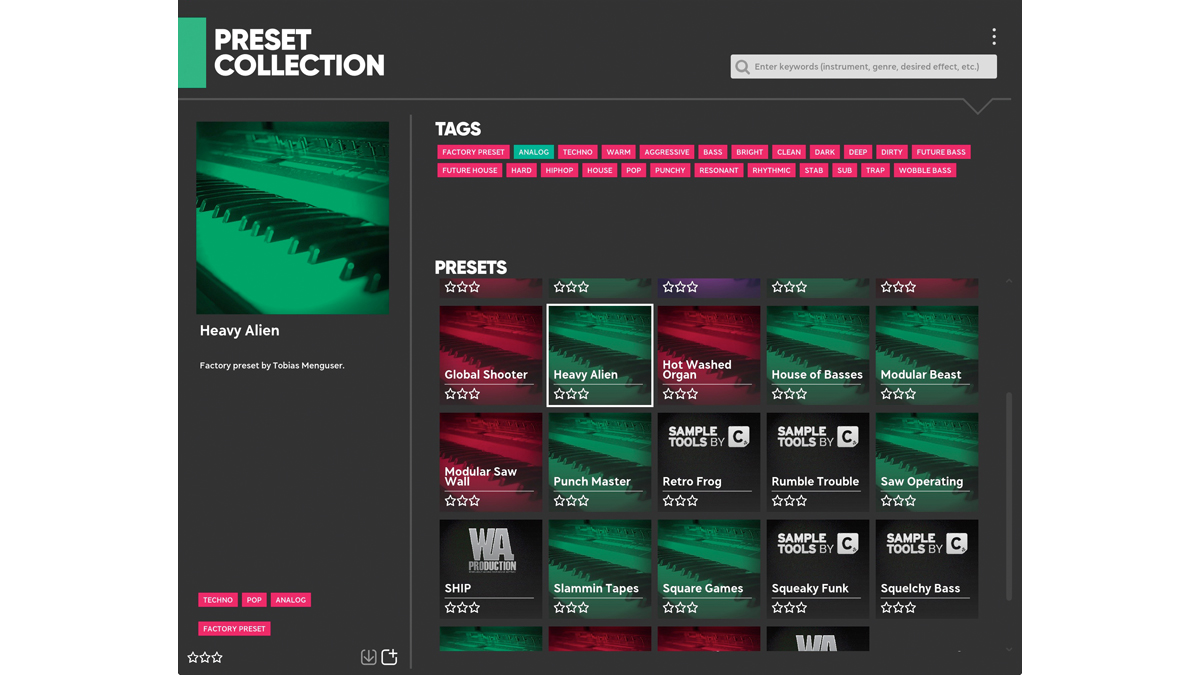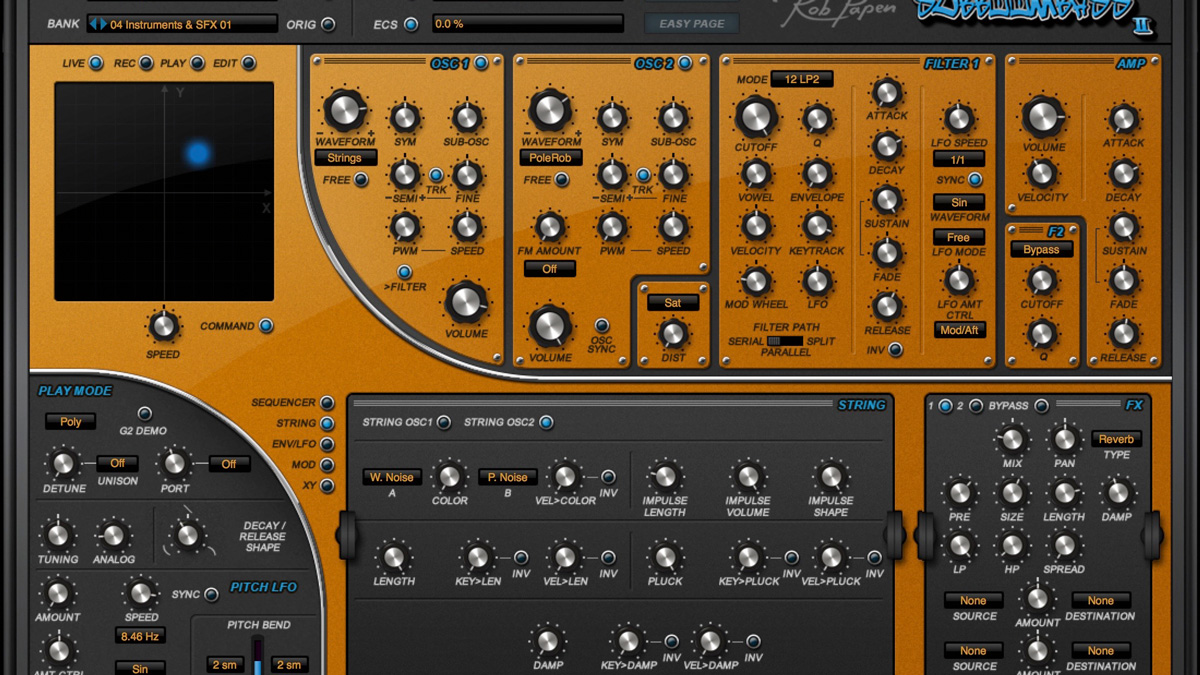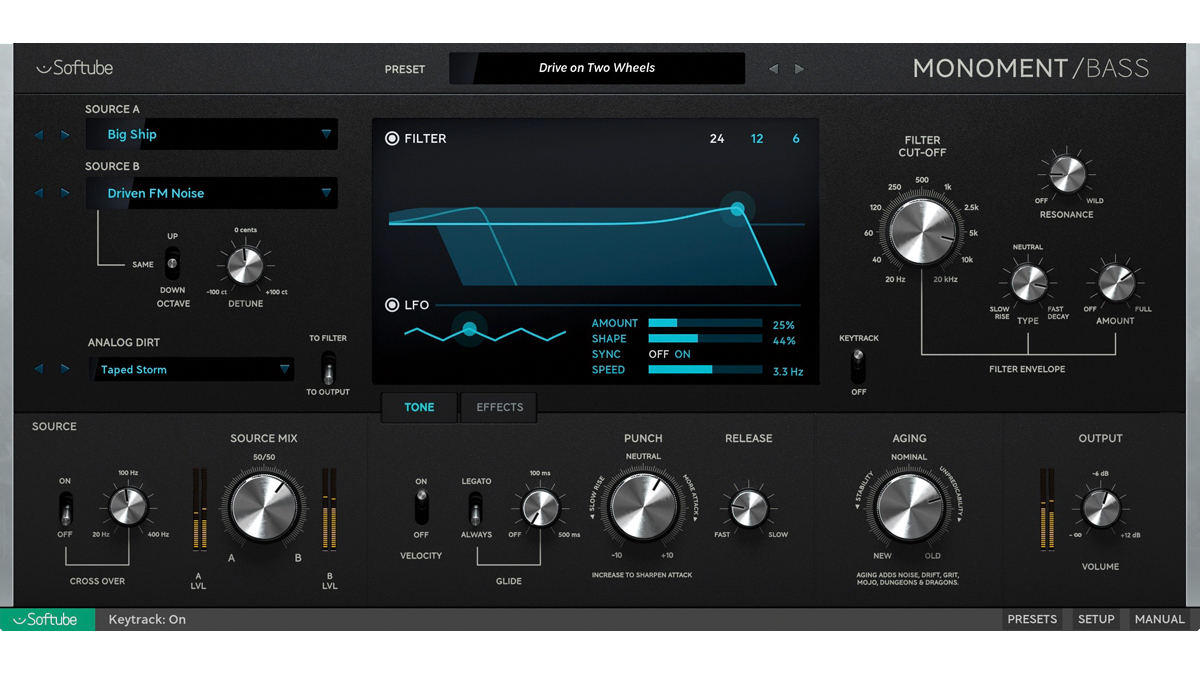MusicRadar Verdict
Sound design novices will have a ball with Monoment Bass, but a fair amount of frustration awaits more experienced users.
Pros
- +
Admirably beginner-friendly
- +
Solid sample library
- +
Superb analogue filter and distortion
- +
Excellent effects
Cons
- -
No pitch modulation
- -
LFO is always free-running
- -
Envelopes need ‘advanced’ ADSR mode
- -
It’s another ROMpler, and we can’t help but expect more from Softube
MusicRadar's got your back
What is it?
Monoment Bass (VST/AU/AAX), is a monosynth dedicated to dance music bass sound creation. It mixes three stereo sample layers together to form a raw tone. Sources A and B draw on a 100-strong library of recorded synth samples, while the Analog Dirt layer accesses a smaller roster of 15 noises and five attacks.
The Source sounds were put together in collaboration with sound designer Tobias Menguser, each one captured as three samples per key (every third note, G0 to F3) from his enviable collection of rare analogue and digital synths, including the Nonlinear Labs C15, Modal 002, Kawai K5000 and Jomox Sunsyn.
Sounds are categorised descriptively in the selection menus - Analog Clean, Analog Dark, Digital Noisy, Digital Punchy, Organ, Processed, etc - and the two Sources are blended using the Source Mix knob. Source B can be kicked up or down an octave and detuned by up to 100 cents either way, and an optional frequency crossover enables separation of A and B at anywhere from 20-400Hz – useful, as the Sources can’t be individually filtered.
The Analog Dirt source, meanwhile, is routable to the low-pass filter or straight to the main output, and mixed in with the Aging control, which also dials in subtle random pitch and attack modulation for a more ‘analogue’ sound. Velocity sensitivity can be disabled, and portamento is applied to legato notes only or all notes, with glide time of 0-500ms.
Filter modulation comes in the form of an envelope and an LFO. Monoment Bass’s Effects section, meanwhile, consists of five boiled-down modules, calibrated to best serve the processing of low-end tones.


Performance and verdict
Monoment Bass provides the newcomer to production with a very capable solution for generating powerful, weighty basslines for house, techno, EDM and the like in no time at all. The sample library is laden with thoroughly viable full-fat source material, and the controls couldn’t be easier to get a handle on.
However, while such approachability is generally a good thing, in this case, it does come at the expense of depth, and some of the obvious omissions cut quite deep - proper envelopes, per-Source filtering and shaping, and any form of pitch modulation chief among them.
Want all the hottest music and gear news, reviews, deals, features and more, direct to your inbox? Sign up here.
Essentially a well-made ROMpler, Monoment Bass offers little to meaningfully differentiate it from countless Kontakt libraries.

Don’t get us wrong, though: the plugin itself sounds good (in fact, the faux analogue filter and distortion, and effects are quite magnificent) and certainly makes it almost embarrassingly easy to come up with ‘mix-ready’ bass tones in a hurry. It’s just all a bit... underwhelming.
MusicRadar verdict: Sound design novices will have a ball with Monoment Bass, but a fair amount of frustration awaits more experienced users.
The web says
"[Monoment Bass] could be a real go-to for basses if you find yourself struggling to get sounds that really sit in your track, especially in the more electronic domain." MusicTech
Hands-on demos
Softube
Sonic State
Shamshir Sound
Specifications
- 100 different stereo waveforms, each sampled three times from boutique high-end synths
- 15+ noise and attack waveforms
- 24, 12 and 6 dB low-pass filter with distortion
- LFO modulation (free running or tempo synced) on filter cut-off
- Filter envelope modulation
- Cross-over filter between source A and B
- 2 glide modes (legato and “always”)
- 2 types of distortion
- 5 types of stereo reverb
- Multiband Compression
- Spatialization
- EQ (including 24 dB low cut)
MusicRadar is the number one website for music-makers of all kinds, be they guitarists, drummers, keyboard players, DJs or producers...
- GEAR: We help musicians find the best gear with top-ranking gear round-ups and high-quality, authoritative reviews by a wide team of highly experienced experts.
- TIPS: We also provide tuition, from bite-sized tips to advanced work-outs and guidance from recognised musicians and stars.
- STARS: We talk to musicians and stars about their creative processes, and the nuts and bolts of their gear and technique. We give fans an insight into the craft of music-making that no other music website can.

